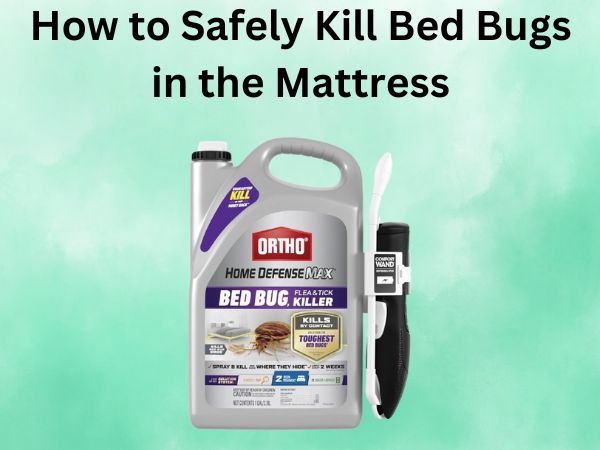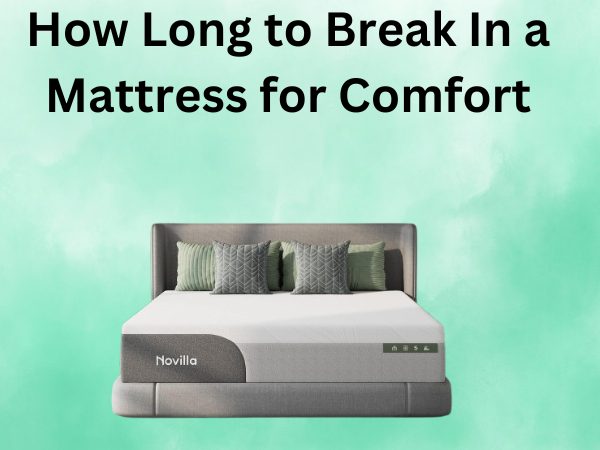How to Safely Kill Bed Bugs in the Mattress
Have you ever woken up in the morning with itchy, red bites all over your body? If so, you may have a bed bug infestation on your hands. These pesky critters can hide in the crevices of your mattress, making it a breeding ground for their invasion. But fear not! In this comprehensive guide, I’ll share proven strategies to safely and effectively kill bed bugs in the mattress and reclaim your peaceful nights.
Understanding the Bed Bug Problem
Bed bugs are small, oval-shaped insects that feed on human blood. They’re notorious for their ability to hide in the smallest of spaces, making them incredibly difficult to eradicate once they’ve made your mattress their home. These resilient pests can survive for several months without a meal, making them a persistent problem.
Signs of a Bed Bug Infestation
Recognizing the signs of a bed bug infestation is the first step in tackling the problem. Look for the following telltale signs:
- Small, reddish-brown spots on your mattress or bedding – these are bed bug droppings
- Tiny, white eggs or eggshells in the seams and crevices of your mattress
- Live bed bugs crawling on your mattress or in the surrounding area
- Unexplained itchy, red bites on your skin, often in a line or cluster
Preparing to Eliminate Bed Bugs from the Mattress
Once you’ve confirmed the presence of bed bugs, it’s time to take action. Proper preparation is crucial for effectively killing bed bugs in the mattress and preventing them from spreading to other areas of your home.
Gather the Necessary Supplies
To effectively eliminate bed bugs, you’ll need a few essential items:
- A high-powered vacuum cleaner with a crevice tool attachment
- Bed bug-specific insecticide or chemical treatment
- Mattress encasement or protector
- Plastic bags or containers for storing contaminated items
- Washing machine and dryer for laundering bedding and clothing
Declutter and Prepare the Mattress
Before you can begin the bed bug treatment, it’s important to thoroughly clean and prepare the mattress:
- Remove all bedding, linens, and mattress toppers and wash them in hot water (at least 140°F/60°C)
- Vacuum the entire mattress, paying close attention to the seams, tufts, and crevices where bed bugs may be hiding
- Use the crevice tool to reach into hard-to-access areas and remove any visible bed bugs or eggs
- Carefully inspect the box spring, bed frame, and surrounding areas for signs of bed bug activity
Effective Bed Bug Treatment Methods
Now that you’ve prepared the mattress, it’s time to implement bed bug treatment strategies to eliminate the infestation. Here are some of the most effective methods:
Chemical Treatments
Applying an EPA-registered insecticide or bed bug-specific chemical treatment is one of the most reliable ways to kill bed bugs in the mattress. Follow the product instructions carefully, and be sure to treat the entire mattress, including the box spring and bed frame. Remember to always use these products in a well-ventilated area and take necessary safety precautions.
Heat Treatment
Exposing bed bugs to high temperatures can effectively kill them and their eggs. Consider renting a specialized heat treatment unit or hiring a professional exterminator to treat your mattress with intense heat, typically around 120°F (49°C) or higher.
Diatomaceous Earth
This natural, non-toxic powder can be an effective bed bug treatment for your mattress. Sprinkle a thin layer of diatomaceous earth over the entire mattress surface and let it sit for several days before vacuuming it up. The sharp edges of the powder puncture the bed bugs’ exoskeletons, causing them to dehydrate and die.
Steam Cleaning
Using a high-powered steam cleaner can help kill bed bugs in the mattress by exposing them to intense heat. Carefully steam clean the entire mattress surface, paying close attention to the seams, tufts, and crevices where bed bugs may be hiding.
Preventing Future Bed Bug Infestations
After successfully killing bed bugs in the mattress, it’s important to take steps to prevent future infestations. Here are some effective prevention strategies:
- Encase your mattress and box spring in bed bug-proof covers to trap any remaining bugs and prevent new ones from entering
- Regularly inspect your mattress and surrounding areas for signs of bed bug activity
- Vacuum your mattress and surrounding areas frequently to remove any potential hiding spots
- Avoid bringing secondhand furniture or mattresses into your home, as they may harbor bed bugs
- Maintain a clean and clutter-free bedroom to make it harder for bed bugs to establish a hiding place
Conclusion
Dealing with a bed bug infestation in your mattress can be a daunting task, but with the right approach, you can effectively kill bed bugs in the mattress and reclaim your peaceful nights. By following the strategies outlined in this guide, you’ll be well on your way to a bed bug-free sleeping environment. Remember to be diligent, patient, and persistent – the key to winning the battle against these resilient pests.
FAQs
How long does it take to get rid of bed bugs in a mattress?
The time it takes to eliminate bed bugs from a mattress can vary, depending on the severity of the infestation and the treatment methods used. In general, it can take several weeks to a few months to fully eradicate bed bugs from a mattress and the surrounding areas. Consistent and thorough treatment is crucial for successful elimination.
Can bed bugs live in memory foam mattresses?
Yes, bed bugs can infest and live in memory foam mattresses, just as they can in traditional innerspring mattresses. The crevices, seams, and folds in memory foam provide ample hiding spots for bed bugs to thrive. Proper treatment and preventive measures are essential for protecting memory foam mattresses from bed bug infestations.
How do you know if bed bugs are gone from a mattress?
The best way to confirm that bed bugs have been eliminated from a mattress is to conduct a thorough inspection. Look for the absence of live bed bugs, eggs, and droppings, as well as the lack of new bites or other signs of infestation. If you’ve followed the treatment methods outlined in this guide and haven’t seen any evidence of bed bugs for several weeks, it’s a good indication that the infestation has been successfully eliminated.
Can bed bugs spread from one mattress to another?
Yes, bed bugs can easily spread from one mattress to another, as well as other furniture and living spaces. They are adept at hitchhiking on clothing, bedding, and personal belongings, allowing them to move from one infested area to another. Proper treatment and containment of the affected mattress is crucial to prevent the further spread of bed bugs throughout your home.
How often should you replace a mattress after a bed bug infestation?
There is no universal rule for how often you should replace a mattress after a bed bug infestation. In many cases, a thorough treatment and encasement of the existing mattress can effectively eliminate the bed bugs without the need for replacement. However, if the infestation is severe or the mattress is heavily damaged, it may be necessary to consider replacing it. Consult with a professional exterminator to determine the best course of action for your specific situation.


![What Is The Best Mattress For Back Support And Comfort [In 2026]](https://homeunderstandable.com/wp-content/uploads/2025/11/Best-Mattress-For-Back-Support-And-Comfort.jpg)
![What Is The Best Quality Mattress for the Price [In 2025]](https://homeunderstandable.com/wp-content/uploads/2025/08/Best-Quality-Mattress-for-the-Price-1.jpg)

![What Is The Best Blow Up Mattress for Bad Back [In 2025]](https://homeunderstandable.com/wp-content/uploads/2025/06/best-blow-up-mattress-for-bad-back.jpg)

![What Is The Best Mattress Topper for Firmness [In 2025]](https://homeunderstandable.com/wp-content/uploads/2025/06/best-mattress-topper-for-firmness.jpg)